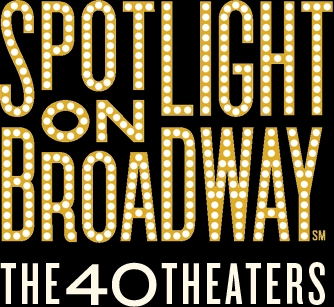The Brooks Atkinson, built in 1926 and originally called the Mansfield Theatre, was named after the celebrated actor Richard Mansfield who died at the height of his career.
Irwin Chanin, the theater’s owner, named it for Mansfield after hearing him speak while at college at Cooper Union. More elaborate than many of the theaters designed by Krapp, this one was done in a modern Spanish style with twisted columns on the facade and an ornate interior designed by Roman Melzer that contains elaborate murals. In 1930, The Green Pastures, a controversial play about the bible with an all-black cast, opened at the theater and went on to win the Pulitzer Prize. During the 1950s, the theater became a television studio and when it reopened in 1960 as a legitimate theater, it was renamed the Brooks Atkinson after the New York Times theater critic, the first theater to be named after a critic. In 1961, Neil Simon premiered his first play, Come Blow Your Horn. Since then, the Brooks has been home to many Tony Award–winning plays including Noises Off and Death of the Maiden.





















